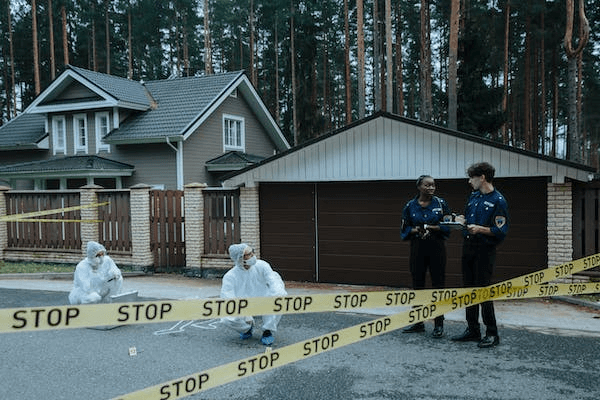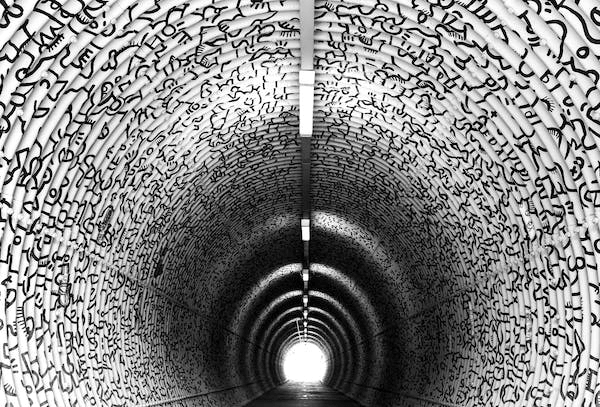Underground utility installation is one of the most challenging aspects of any construction project. It requires specialized knowledge, expertise and attention to detail in order to ensure safety and accurate completion.
Unfortunately, there are a number of common challenges that can arise during the process that can put the success of the project at risk. In this article, we’ll explore those common challenges and discuss how to overcome them in order to ensure successful underground utility installation.
Understanding The Site
The construction of underground utilities is a complex and intricate process that requires an immense amount of planning. I liken it to a delicate dance, with workers performing a choreographed routine in order to ensure that the job is done correctly.
Every movement must be precise and every step taken carefully so as not to disrupt the delicate balance of the natural environment or cause more harm than good.
The biggest challenge faced by workers in this industry is understanding exactly what lies beneath the ground. Unforeseen obstacles such as large rocks, tree roots, and sometimes even wild animals can appear out of nowhere and derail an entire project.
To avoid such surprises, an accurate survey of the site should be conducted prior to commencing work. By taking into consideration the local topography, soil type, and any potential obstructions that could be encountered, workers can develop a plan designed to minimize potential risks and maximize efficiency.
Thorough research into the area will also help identify existing utility lines so as to avoid accidental damage during excavation or installation work. With careful planning and preparation, underground utility projects can be completed with minimal disruption to both workers on-site and any surrounding infrastructure.
Identifying Utilities
Now that we understand the site, it is time to identify the underground utilities. This task can be difficult and requires a professional who is an expert in this field. There are three key steps to effectively identify the utilities: surveying, mapping, and testing.
The first step is surveying the area. The surveyor must note all existing underground utilities, noting any visible evidence of location or depth. This will help you on how to locate underground utilities.
The second step is mapping the utilities. The surveyor uses their findings from the surveying process along with detailed drawings and plans to create a map of existing utility lines that can be used for reference when excavating or constructing any new features. This map will also be used for other activities like relocating or expanding existing utility lines.
Finally, the third step is testing the utilities. The surveyor will use specialized equipment such as ground penetrating radar (GPR), electro-magnetic locators (EMLs), and acoustic imaging devices to determine what type of material each line is made out of and its exact location in relation to other utility lines.
With this information, they can make sure there are no conflicts or obstructions that could cause problems during construction or excavation projects. By following these steps, underground utilities can be identified safely and efficiently without causing damage or disruption to any existing infrastructure. Knowing exactly where these lines are located will help reduce costs associated with mistakes made during construction or excavation activities while ensuring safety for everyone involved in these projects.
Working In Restricted Areas
When working in and around restricted areas, some may be skeptical of the feasibility of completing tasks due to the potential risks. However, with the right preparation, knowledge and equipment, it is possible to safely overcome the challenges found in these challenging environments.
| Type of Equipment | Safety Features | Advantages |
|---|---|---|
| Explosive Gas Detectors | Vibration and Impact Alarm System | Easy to Operate and Use |
| Thermal Imaging Cameras | Internal Memory for Documenting Findings | Lightweight & Durable Design |
| Directional Drills | GPS & Ultrasonic Technology | Allows for Precise Navigation |
As an underground utilities expert, I have experienced first-hand how valuable the right security measures are when operating in restricted areas. Explosive gas detectors allow workers to detect any hazardous gases that may be present before beginning a task.
Thermal imaging cameras provide images at night or in poor visibility conditions while directional drills ensure that workers can maneuver safely without damaging existing infrastructure.

All of these tools are designed with safety features such as vibration and impact alarm systems, internal memory for documenting findings, GPS & ultrasonic technology and lightweight & durable designs – all which guarantee efficient completion of tasks while minimizing potential risks.
Given the sensitive nature of underground work, having access to quality equipment is important for achieving success. With reliable tools and adequate preparation, it is possible to confidently tackle any challenge posed by restricted environments – thus allowing for safe and successful completion of projects.
Dealing With Unforeseen Hazards
When dealing with underground utilities, there are always potential hazards that can arise unexpectedly. Unforeseen hazards can be anything from a change in terrain to an unexpected object in the way. As such, it is important for any crew working on underground utilities to be prepared for these types of events.
The primary way to prepare for unforeseen hazards is to take extra measures when planning out the project. This includes researching the area and ensuring that all crews have access to the most up-to-date safety protocols.
Additionally, it’s important for teams to keep open lines of communication so that any changes encountered during the project can be addressed quickly and efficiently.
Having proper training is also essential when dealing with unforeseen hazards. Crews should be properly trained on how to handle various situations and how to use any necessary tools or equipment safely and effectively.
Having clear guidelines and processes available enables crews to respond quickly and appropriately in order to reduce potential risks while they work on underground utilities projects.
Overall, having a solid plan in place along with proper training ensures that crews can address any unforeseen hazards without compromising their safety or effectiveness.
Managing Safety Protocols
Having identified the various hazards that can be encountered during underground utilities operations, it is important to turn our attention to managing safety protocols. Working in such environments requires workers and supervisors to be vigilant throughout the course of each project.
These are a few key steps to ensure safety:
- Familiarize all personnel with the layout of the work area and provide detailed instructions on how to handle specific tasks.
- Ensure that everyone is up-to-date on their training and certified in any relevant safety qualifications they may need for the job.
- Establish a system of regular safety checks and inspections, both before and during work operations, to identify potential risks before they become dangerous situations.
These measures will help create an environment where all workers feel secure when performing their duties, as well as minimizing the chances of any accidents or damage occurring due to negligence or lack of knowledge. With comprehensive preparation and careful management of operations, underground utilities projects can be conducted safely and efficiently.
Ensuring Quality Assurance
Ensuring quality assurance of underground utilities is an absolute essential part of any project. Without it, projects can quickly spiral out of control, leading to time and money wasted and worse, potentially hazardous conditions. To guarantee the highest level of performance, it is critical to have a system in place that can identify potential obstacles and risks before they become major problems.
To achieve this level of oversight, robust protocols must be established at the onset of a project. This includes assessing all aspects of the job, from analyzing soil composition to monitoring equipment integrity.
A comprehensive review should also be conducted to ensure compliance with applicable standards and regulations. Additionally, having a plan for regular inspections throughout the duration of a project can help catch any issues early on so timely corrective action can be taken.
For a complex task such as underground utility work, there are countless variables that must be taken into consideration during each phase of the job. As such, having an organized approach for conducting quality assurance is crucial for success.
A helpful way to keep track of all components is by using a table that outlines each process step along with its associated tasks and responsibilities. This will allow workers to stay focused on the details without losing sight of the bigger picture.
By following these procedures diligently, organizations can rest assured that their projects will run smoothly and efficiently while avoiding costly mistakes and unnecessary delays down the line.
Conclusion
It’s essential for underground utilities experts to stay ahead of the curve when it comes to potential challenges.
By understanding the site, identifying utilities and dealing with unforeseen hazards, we can ensure that our projects are a success and don’t fall victim to any problems.
Furthermore, by managing safety protocols and ensuring quality assurance, we can guarantee that our work is done in a safe and effective manner.
It’s only through this kind of diligence that we can be sure that our projects will run smoothly and be completed on-time.

